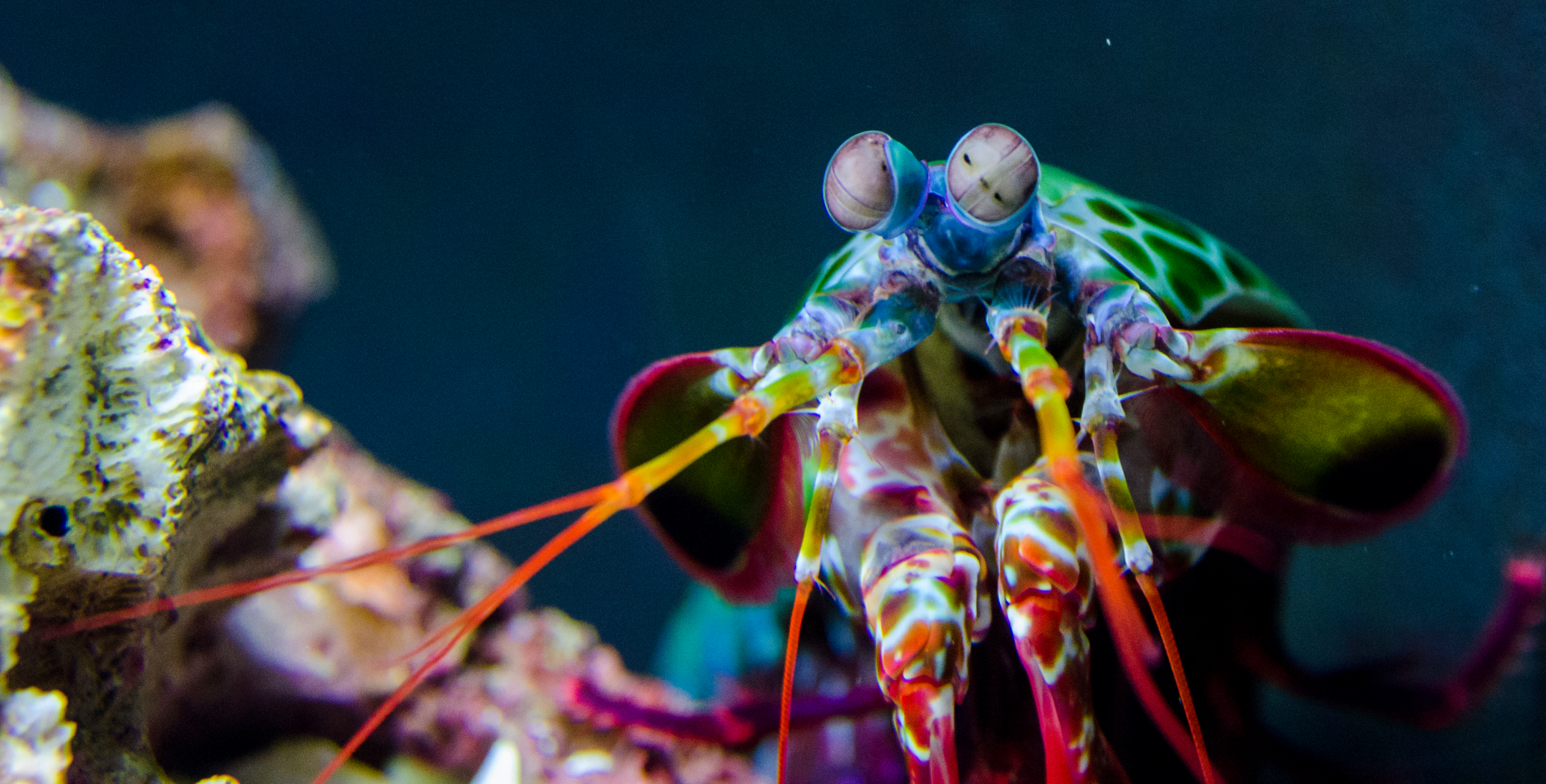The raptorial appendage of the mantis shrimp strikes with tremendous speed and force through power amplification.
The mantis shrimp is an aggressive marine crustacean that uses specialized forelimbs (called raptorial appendages) to capture its prey. Mantis shrimp that are “smashers” use a hammer-like strike to destroy the shells of snails and other mollusks, exposing the soft body of the animal so that it can be eaten. The mantis shrimp’s strike can even smash aquarium glass. It does this with a tough bulbous heel on the raptorial appendages, which function in both feeding and protection. The raptorial appendage, like most of the mantis shrimp’s body, is composed of tough exoskeletal material. It is divided into four segments: the merus (closest to the body) houses the major muscle groups. Next is the carpus, propodus, and then the dactyl, which differs in shape depending on the species of mantis shrimp. “Smashers” bear the hard heel on their dactyls. While there are many different species of mantis shrimp, the raptorial appendages use the same principle to generate rapid and forceful movement. This principle is called power amplification.
Power amplification systems amplify the mechanical power generated by relatively slow muscle contractions by separating muscle contraction and movement into two sequential steps: the load phase and the release phase.
In the load phase for the mantis shrimp raptorial appendage, flexor muscles in the merus contract to engage small hardened parts of the merus against other parts of the exoskeleton, which function like a latch to keep the whole appendage in place and prevent movement. At the same time, extensor muscles in the merus contract and bend other exoskeletal parts of the merus (the saddle and ventral bars), which store energy like a compressed spring. These flexor and extensor muscles are antagonistic, meaning that they produce opposite movements if they contract individually (your biceps, which flexes the arm, and triceps, which extends the arm, are a pair of antagonistic muscles); however, contracting at the same time enables the large extensor muscle to contract slowly while the appendage is flexed and “latched.” Instead of moving the appendage, the extensor muscle’s slow contraction stores energy as elastic potential energy, essentially loading a spring while it prepares to strike.
When the mantis shrimp is ready to strike, the release phase begins as the flexor muscles relax to release the latch. The appendage’s saddle and ventral bars spring back to their original shape, releasing their stored elastic energy and causing the dactyl segment to rotate forward at speeds up to 45 miles/hour! Because the appendage motion in the release phase takes place over only milliseconds, the mantis shrimp greatly increases the power of its strike.
There’s more to this story, though: check out this related strategy describing how the mantis shrimp’s extremely fast appendages produce a cavitation bubble that creates even more force.
Check out this video to see a mantis shrimp in action, and watch this TED talk by Dr. Sheila Patek for an in-depth description of the mantis shrimp and its impressive abilities.
This summary was contributed by Allie Miller.

The Snail-Smashing, Fish-Spearing, Eye-Popping Mantis Shrimp





